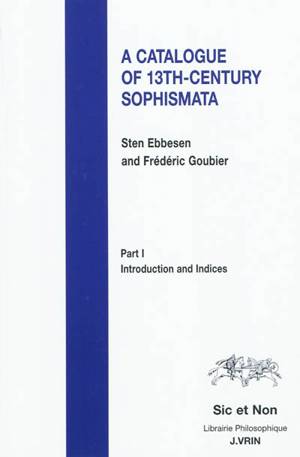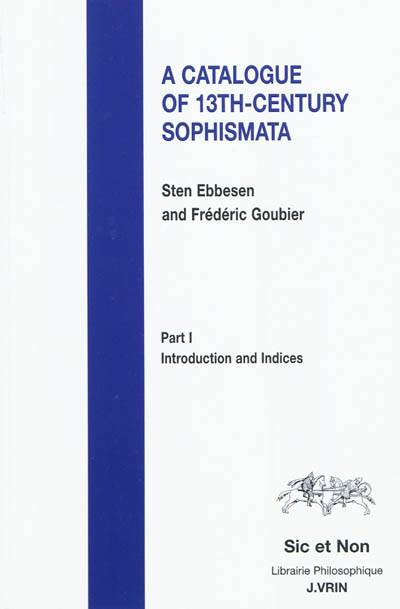
- Retrait gratuit dans votre magasin Club
- 7.000.000 titres dans notre catalogue
- Payer en toute sécurité
- Toujours un magasin près de chez vous
- Retrait gratuit dans votre magasin Club
- 7.000.0000 titres dans notre catalogue
- Payer en toute sécurité
- Toujours un magasin près de chez vous
Description
In the terminology of the medieval faculties of arts a sophisma was a proposition that
produced problems for logic or grammar because, apparently, it could be shown to be
both true and false or both grammatically correct and incorrect. Analysis of sophismata
played a major role in university teaching, and a rich literature reflecting this practice is still
preserved, ranging from brief presentations of each sophismatic proposition followed by
proof, disproof and solution, to massive reports of public disputations that must have
lasted for several hours, and purely literary imitations of such oral discussions.
Sophismata are a mine of information to anyone interested in the development of
medieval logic and grammar, as they were the vehicle for cutting-edge research. This,
however, has only been recognized during the last few decades, and few have exploited
the mine because very few of the preserved collections of sophismata are available in
print, many even remaining unrecognized, as compilers of manuscript catalogues often
overlook or mislabel them.
This catalogue offers the first ever opportunity to orient oneself in the jungle of
13th-century texts on sophismata, edited and unedited alike. It lists and describes every
single collection, but also, importantly, in an alphabetical catalogue of sophismatic
propositions, under each lists every occurrence of it in the corpus, with information about
where each occurrence is found in manuscripts or editions, the syncategoreme to which
it belongs, the kind of analysis it displays, what is the solution offered, and which
questions, if any, receive special attention in quaestiones/problemata, an incipit and an
explicit where there is no edition available, and finally, what secondary literature there is,
if any.
Some 3.000 entries make up the body of the catalogue, which is completed by
extensive indices by topics and by logical tools used in the solutions, offering scholars a
multiplicity of ways to find exactly the information they are looking for.
Spécifications
Parties prenantes
- Auteur(s) :
- Editeur:
Contenu
- Nombre de pages :
- 1024
- Langue:
- Français
- Collection :
Caractéristiques
- EAN:
- 9782711623136
- Date de parution :
- 20-12-10
- Format:
- Livre broché
- Format numérique:
- Trade paperback (VS)
- Dimensions :
- 160 mm x 240 mm
- Poids :
- 1650 g

Les avis
Nous publions uniquement les avis qui respectent les conditions requises. Consultez nos conditions pour les avis.






